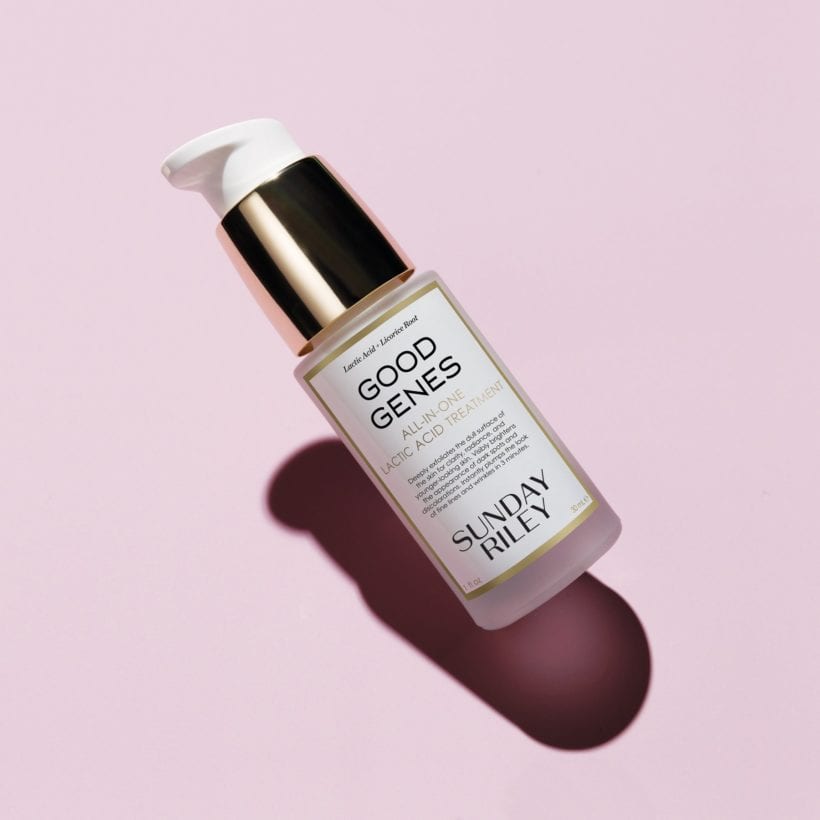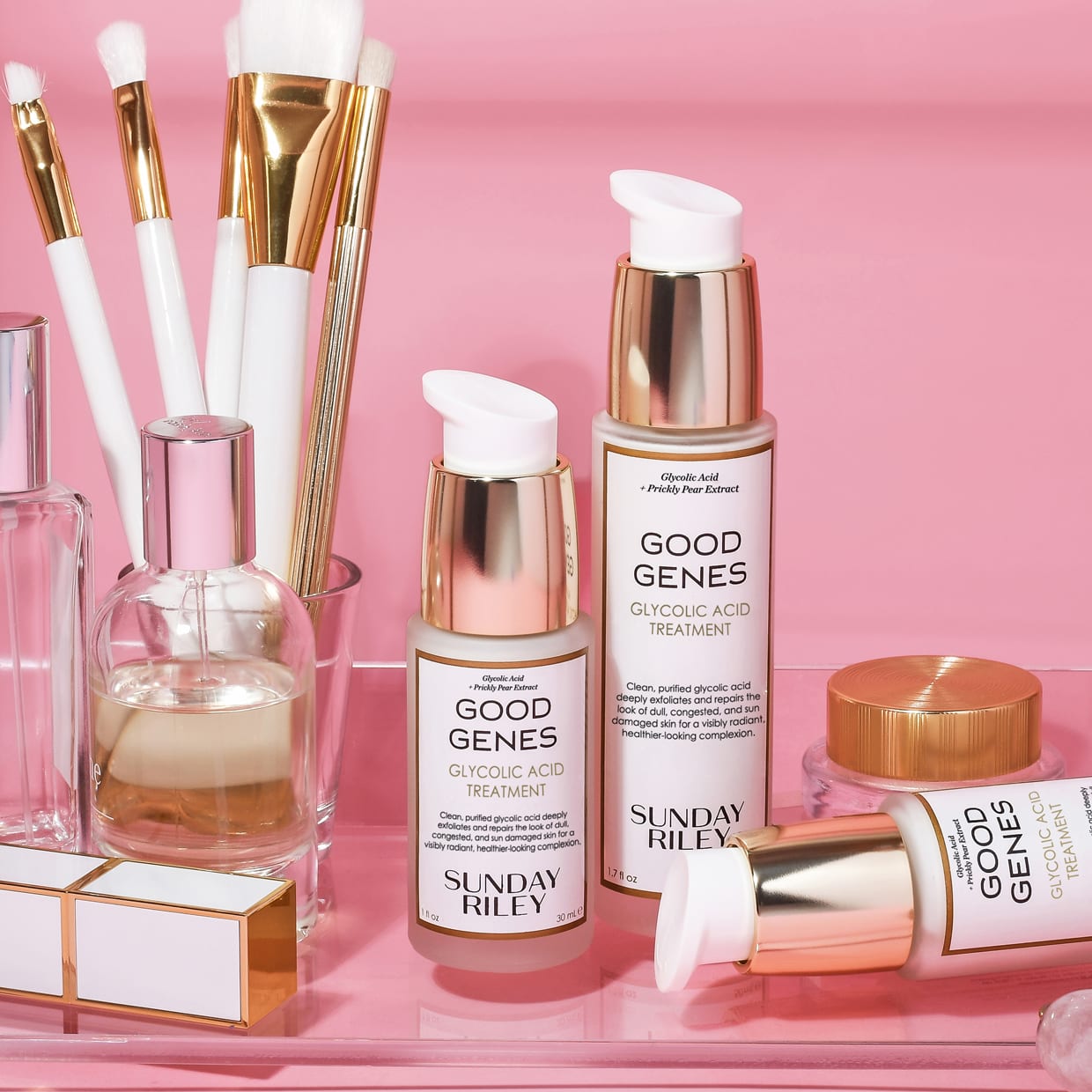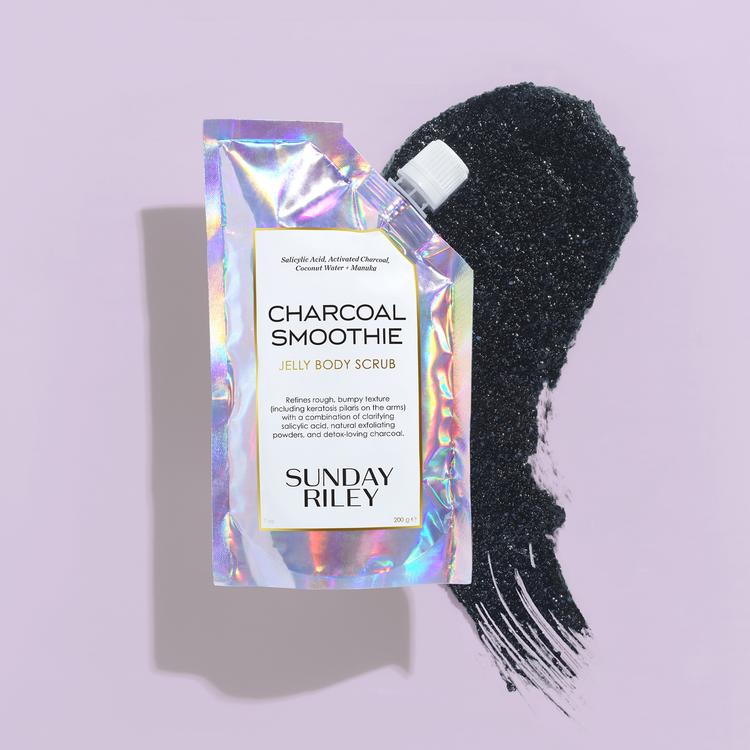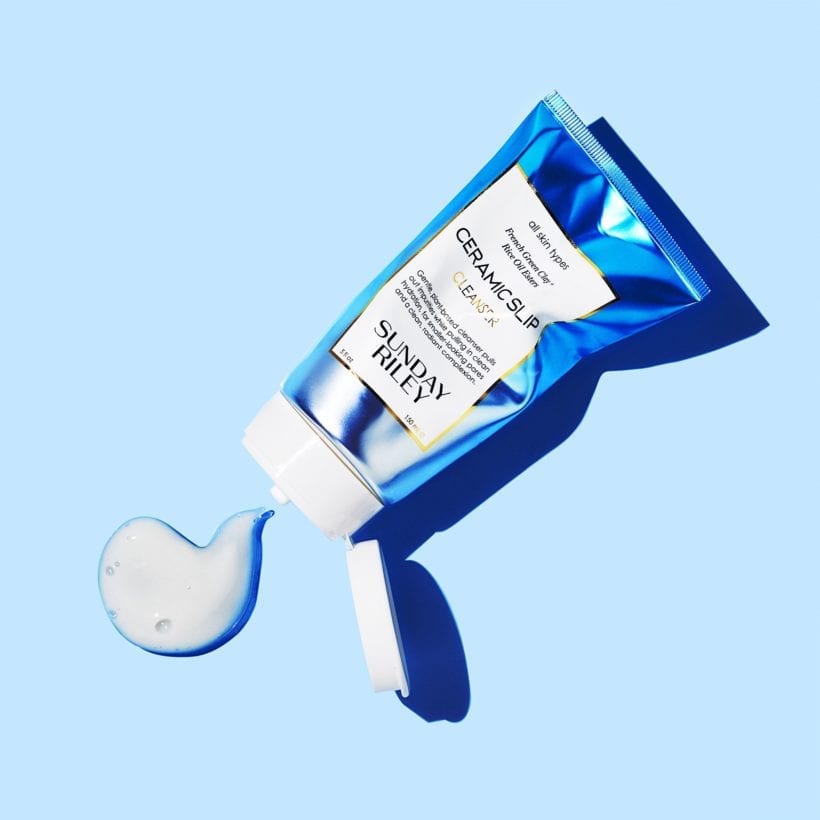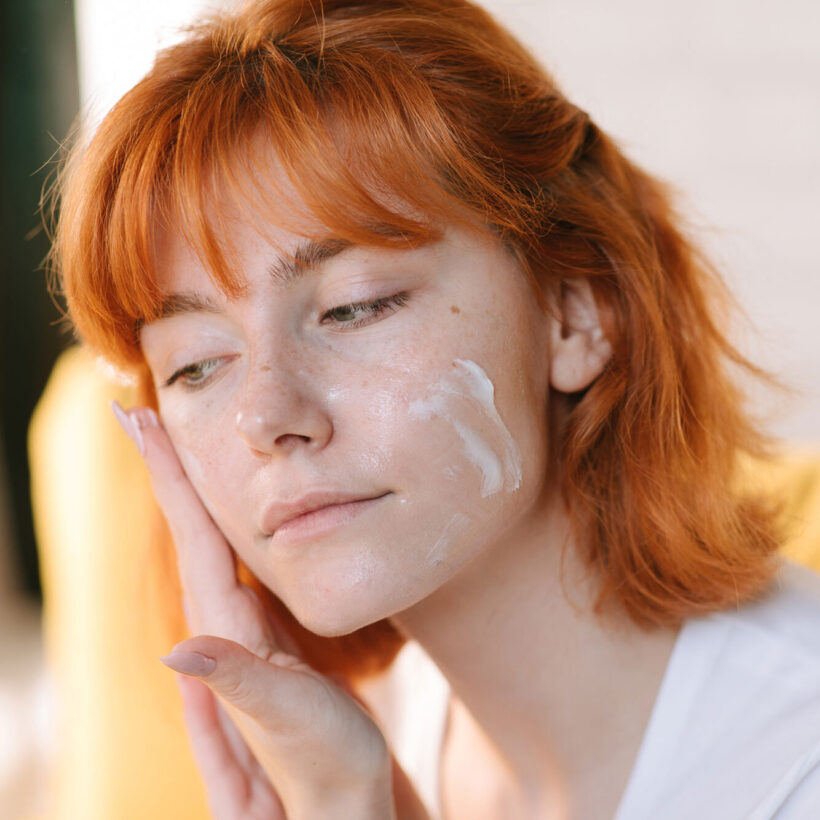Which is gentler: lactic acid or glycolic acid? What is the difference? Which is better? Is it OK to use them every day? Is it OK to use them together?
These are the most common questions in our Sunday Riley Facebook Group. Acids might seem pretty intimidating at first (after all, middle school science class teaches us that they can lead to burns and boils), but when formulated correctly, experts say they can do wonders.
Meet the Experts
Sunday Riley , CEO, founder and product formulator
Nowell Solish , M.D., a cosmetic dermatologist and consulting dermatologist for Indeed Labs
Julie Russak , M.D., a board-certified dermatologist and founder of Russak Dermatology Clinic
Michele Green , M.D., a board-certified dermatologist in New York City
Jeffrey Fromowitz , M.D., a board-certified dermatologist in Boca Raton
This is especially true of glycolic and lactic acids, two of the most popular alpha hydroxy acids (AHAs) whose main function is to exfoliate skin and leave behind a beautiful glow. They do this by weakening the binding properties of the particles that hold the outer skin cells together. “This leaves you with smoother skin that’s more even in texture and color and paves the way for other products to penetrate deeper,” says Sunday Riley, CEO, founder and product formulator. “I call it like cleaning the dirty window of the skin. Our acids work from the top down; they’re removing that dull, dead surface. All those dull, dead skin cells, when we help to sweep them away, are now no longer falling into your pores and congesting your skin.”
Glycolic and lactic acids, two of the most popular alpha hydroxy acids (AHAs), main function is to exfoliate skin and leave behind a beautiful glow.
Read on to learn more about the difference between glycolic acid and lactic acid and what sets them apart so you can choose the best one for your needs and (deep exhale) finally achieve skin nirvana.
What is Lactic Acid?
Lactic acid is a slightly gentler chemical exfoliant. It’s perfect for brightening skin or removing any rough dead cells you might have, making it perfect for anyone looking to treat dryness and improve hydration.
“Lactic acid is one of my absolutely favorite hydroxy acids. It’s a larger molecule, so it doesn’t sink as deeply into the surface of the skin as other alpha hydroxy acids, which makes it a little bit gentler, but it’s also the only one that’s hydrating. So it’s great for everyone. The product that I’m obsessed with is our bestseller, Good Genes. It is an alpha hydroxy acid all-in-one lactic acid serum. And what that’s going to do is micro-exfoliate the surface of your skin for instant radiance. It’s also going to help decongest the skin by removing all the poor clogging debris on the surface of your skin, which is also going to help give you the appearance of smaller pores because it gets everything out and off of your skin, which is amazing. It’s also been clinically proven to plump the look of fine lines and wrinkles around the eyes in just three minutes.* The texture is lightweight; this serum is perfect for any skin type. It’s great for every person, all skin types, whether you’re 15 or 85,” says Riley. “I’m a big believer as a product formulator that you need three ingredients in your life no matter what your skin type is. And that will be an alpha hydroxy acid, a retinol, and a vitamin C product. I have chronically dry skin, and I use Good Genes at least once a day. I typically do it in the morning, and you can see the glow immediately. No wonder this product still wins awards like Allure Best of Beauty 2023. It’s one of a kind. I like to rub it in, pat it in, massage it, and get a little bit of rosy from that circulation from the massage. The massage will help that product get a little bit more in your skin.”
*Results obtained via profilometry analysis.
Key Benefits of Lactic Acid
Lactic acid is beneficial for skin health, providing several key advantages when included in your skincare routine:
- Promotes an even skin tone.
- Smooths skin texture.
- Reduces the appearance of dark patches.
- Cleanses and helps clear pores.
What is Glycolic Acid?
“Glycolic Acid is the smallest AHA, which means it penetrates deeper into the skin than other AHAs. Because of this, glycolic acid is ideal for deeper surface exfoliation, clearer-looking skin, and the appearance of smaller pores. By dissolving and sweeping away dead skin cells located on the outer layer of skin and excess oil, the signs of dull skin and congestion are cleared. The look of wrinkles and fine lines are visibly smoothed while collagen production is increased. Further treatments, serums, and creams can sink into the skin better after Good Genes application,” explains Riley.
Key Benefits of Glycolic Acid
Incorporating glycolic acid into your skincare regimen can lead to the following improvements:
- Exfoliates dead skin cells to help prevent clogged pores.
- Enhances skin texture, making it smoother.
- Helps reduce hyperpigmentation, such as age spots and dark marks.
- Minimizes the appearance of enlarged pores.
Lactic Acid vs Glycolic Acid
Glycolic acid can penetrate deeper than lactic acid. Both are generally well-tolerated by most skin types, but if you have any doubts, get Sunday Riley’s free virtual consultations before use. Curious about the differences between lactic acid and glycolic acid? Read on to learn which would suit you and your skincare routine, as well as how to best layer your skincare products.
Derived from Different Sources
Though glycolic and lactic acids come from the same chemical compound group – the smallest alpha hydroxy acid, glycolic acid (also known as hydroxyacetic acid) is derived from sugarcane. “It is also referred to as a ‘fruit peel,’ because it can be found in certain foods and fruits, such as tomatoes and pineapples,” says Julie Russak, M.D., a board-certified dermatologist and founder of Russak Dermatology Clinic. Lactic acid, on the other hand, is usually derived from milk. “In Good Genes All-in-One Lactic acid treatment, we use vegan lactic acid. Unlike traditional lactic acid, vegan lactic acid is typically produced from the fermentation of carbohydrates found in corn (in Good Genes), beets, or cane sugar. This fermentation process is facilitated by certain bacteria that convert the sugars into lactic acid in a controlled environment, ensuring the purity and effectiveness of the acid. This method not only makes it suitable for vegans but also for those with lactose intolerance or allergies to dairy. By choosing skincare products with vegan lactic acid, users benefit from its excellent exfoliating and hydrating properties while adhering to ethical and dietary preferences,” explains Riley.
Work at Their Own Pace
Glycolic acid has the smallest molecular size among all the alpha hydroxy acids. That means it can penetrate deeper into your skin and work faster. Any skincare routine takes repeated use over time to reach its full potential (they don’t call it a routine for nothin’). Still, if you are looking for immediate and more dramatic results, glycolic acid is your best bet.
While lactic acid works similarly when it comes to exfoliating, Dr. Russak notes that because the molecules in lactic acid are larger and the pH lower, the exfoliation tends to be more surface level, “typically affecting the top-most artificial layer of the skin.” product. Lactic Acid is one of the most hydrating alpha hydroxy acids.
@sundayrileyIs there anything better than a perfectly organized skincare shelf? #sundayriley #skincare #shelfie♬ original sound – SundayRiley
Each Have Other Skin Goals
When it comes to lactic acid vs glycolic acid, they both share the primary objective of exfoliating your skin. However, they each boast separate benefits.
If you want to smooth lines and wrinkles…
“Glycolic acid has the ability to activate and increase fibroblast cells that help produce collagen,” explains Dr. Russak. Boosting collagen helps your skin stay firm longer and, over time, decreases wrinkles and thickens the skin. Lactic acid can also help you to achieve this goal. Good Genes Lactic Acid treatment is clinically tested and proven to significantly improve the appearance of lines and wrinkles in 3 minutes* *Results obtained via profilometry analysis.
100% of women said their skin looked and felt significantly smoother and more radiant, with visibly reduced lines and wrinkles.
If you have acne-prone skin…
Both versions of Good Genes are beneficial for acne-prone skin because they are expertly formulated to optimize the skin’s pH balance, creating an environment where P. acnes bacteria — the primary bacteria responsible for acne — cannot thrive. “By gently exfoliating the skin and removing excess sebum, it prevents the conditions that favor the growth of acne-causing bacteria, promoting clearer, healthier-looking skin,” says Riley. Because glycolic acid penetrates more deeply, it can be especially beneficial for oily or acne-prone skin. “It removes oil buildup and excess sebum production, unclogging pores for a clearer complexion,” says Michele Green, M.D., a board-certified dermatologist in New York City.
If you have hyperpigmentation…
Glycolic acid can also disturb the production of melanin within the basal layer of the skin, making it a good option for those looking to combat hyperpigmentation. “This interference speeds up cell turnover, which produces healthier-looking skin due to the reduction in melanin production and gradual sloughing of dead skin skills,” adds Green. These results can also be achieved by using lactic acid. “Together with skin-brightening licorice root extract and lemongrass in Good Genes’ formula, this super-concentrated treatment visually reduces the look of dark spots and discoloration caused by exposure to the sun, for naturally brighter, even-toned skin,” says Riley.
If you have super sensitive skin…
Since lactic acid molecules do not end up penetrating as deeply as glycolic, they also tend to be less irritating to the skin surface, explains Dr. Russak. “This makes the peel a milder and gentler option suitable for all skin types, but especially good for more sensitive types,” she says. “It’s gentler, so you’re not going to get a lot of irritation from it. If you’re newer to acids, you can use Good Genes every other day, or you can do two days on and two days off. Whatever works for you, slowly adjust to it and then work your way up to every day, and you’ll be smooth sailing from there on out. It’s either going to give you this instant radiance with no downtime,” says Riley.
If you have dry skin…
“Lactic acid is more gentle and more humectant, making it ideal for hydrating dry skin,” says Jeffrey Fromowitz, M.D., a board-certified dermatologist in Boca Raton. “It is also good for people who have bumpy skin, typically seen on the outer arms and legs called keratosis pilaris (a common result of severely dry skin),” adds Dr. Solish. Lactic acid is also great for any dryness brought on by cold, wintery weather. “An acid exfoliator is going to remove that dull, dead surface more evenly. You’ll get that instant radiance, all those things that maybe we’ve lost in the winter, with time, with stress. As we get older, we typically tend to lose that healthy, radiant glow, that beauty that we had before in the skin. This infuses it right back into it,” explains Riley.
Note: The skin on your body is harder and thicker than on your face, so getting moisture into the skin can be more difficult. Most would probably assume that glycolic acid would be better for this — and a lot of body products do contain glycolic. Lactic acid not only has the ability to help clear keratosis pilaris, but it also provides you with more hydration. It’s like a two-in-one for your skin.
How often should I use Good Genes
“Good Genes is a gentle serum. It’s something that if you’ve never used it before, you can absolutely start and use it every single day. Start with about one pump, and then you can build it up. But if you’re nervous, if you’re worried, that’s not a problem. There’s no wrong way to do it. So I always have two little tricks that you could do. One is that you could start using it every other day. And the other one is that you could pump it into your moisturizer and help build up the tolerance. And again, we’re seeing this transformation in the skin with these products evening out of tone and the skin looking more alive and fresher,” says Riley.
You want to look like yourself, but better, healthier, and like you slept well. So, this is a treatment that we’re focusing on after we’ve cleansed under our moisturizer. “This is another layer that we’re adding in, so we can get the best from our skin, get it to behave well, and get it looking as glowy and wonderful as we can possibly manage,” explains Riley.
What about Good Genes Glycolic? “If you want the clinical benefits of using a glycolic acid serum, that usually does come from daily use, that’s how I used it every day for 15 years, but again, you can slowly layer it, and you could do it three days a week. You will see improvement no matter what, no matter how you use it. It’s something if you put it on at night, you wake up the next day and see instant improvement; put it on in the morning, and you’ll see the glow within minutes. This is one of those magic wand products we have in the line. You can use it twice a day. We certainly have people who use it twice a day. If you use it twice daily, I would use one pearl-size amount.”

Pairing with SPF is a Must
When using either lactic acid or glycolic acid, year-round sun protection is an absolute must, as studies have shown that sun sensitivity can last up to two weeks after you have stopped using the product or have had a peel treatment.
Still unsure which to choose? As always, you should sign up for a virtual consultation to help figure out the best game plan. If you are an acid virgin, lactic is generally considered a great place to start thanks to its gentle properties and quick results. If you are nervous, leave it as a mask for 15 minutes (apply 1-2 pumps to clean, dry skin) and then rinse well so it does not sit on your skin for a long period of time, and you can see how your skin reacts to it. That’s also a great way to prep your skin for makeup. And, as with any new product, do not forget to do the patch test.
We only recommend products we have independently researched, tested, and loved. If you purchase a product found through our links, Sunday Edit may earn an affiliate commission.


